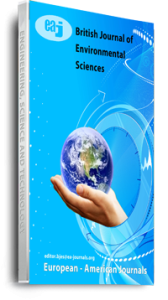This scientific research is primarily based on real-time data collected on air quality. A comprehensive and extensive study was initially conducted to explore the key factors contributing to air pollution. Other relevant information will encompass additional components such as PM10, PM1, and weather-related factors like temperature, humidity, and air pressure. In order to provide a more reliable but at the same time qualitative information it was essential to examine the anomalies and issues revealed by the gathered data. After carefully identifying and correcting anomalies in the dataset, various statistical analyses have been conducted and results have been presented in both tabular and visual formats. These data are based on fundamental inquiries directly tied to the significance of air quality. After interpreting the statistics, a regression model such as OSL was used always including data that do not have multicollinearity. Based on the findings, it appears that this model is not suitable for forecasting PM2.5 levels because of a significant association between PM10 and PM1
Keywords: AQI, Model, PM 2.5, Regression Model, data, displot function

